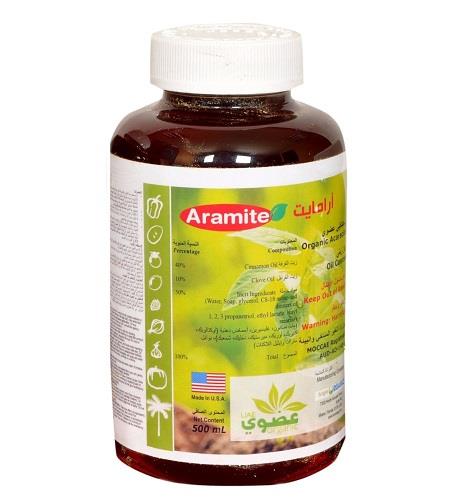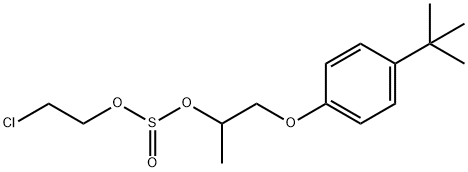Uses of Aramite
Aramite is a synthetic chlorinated hydrocarbon with molecular weight of 334.87 and density of 1.143 at 20°C. It is a clear, light-colored oil with melting point of 37.3 ℃and boiling point of 175 °C at 0.1 mm Hg. The technical grade aramite is a dark amber liquid. Aramite is soluble at 0.000 1% (practically insoluble) in water but is miscible in many organic solvents. It was sold as mixture in organic solvents at different strengths for further dilution and use.

Aramite was used as a pesticide (acaricide) to control mites in plants and animals. Aramite was initially introduced to market around 1950. It was mostly used between 1950 and 1954 in greenhouses in the United States. Its manufacture and use were voluntarily discontinued due to its carcinogenic potential according to a US Environmental Protection Agency (EPA) notice dated 12 April 1977. However, there are reports of bans of aramite use in a few European countries, in 1987 (Lithuania), 1996 (Poland), and 1999 (Estonia). There is no information on the production, import, registration, marketing, stockpiling, and use of aramite in Russia. Occupational exposure through dermal contact and inhalation was possible during its use.
Uses
Aramite was formerly used in control of mites (miticide) in citrus fruits, vegetables, and animals. Active mite stage was most sensitive to aramite toxicity. The death in mites was due to paralysis and disorganized movements of appendages, leading to detachment from the plant. Insects and mites other than Tetracychidae are not as sensitive to aramite. Mites exposed in the field to up to 21 applications were not found to develop resistance in mites, unlike other organochlorines where insects develop resistance rapidly. Aramite is rendered inactive when mixed with lime and other alkaline materials. Aramite was used in combination of other pesticides to control a wide range of mite species.
Environmental Fate
Aramite can be released directly into the environment through its use as an acaricide (miticide); however, this use has been discontinued. If released to soil, aramite is expected to have no mobility. Volatilization from moist soil surfaces is not expected to be an important fate process based on an estimated Henry’s Law constant of 1.9×10-7 atm m3 mol-1. Biodegradation data for aramite are not available, and if released into water, aramite is expected to adsorb to suspended solids and sediments based upon the estimated Koc of 2.0×10+4. Volatilization from water surfaces is not expected to be an important fate process based on this compound’s estimated Henry’s Law constant.
Aramite’s potential for bioconcentration in aquatic organisms is very high. Functional groups of aramite are susceptible to hydrolysis; however, insufficient data are available to predict the relative importance or occurrence of chemical or biological degradation processes in water or soil. Aramite is hydrolyzed by alkalies and may contribute to degradation in soil or water. If released into air, aramite is expected to be physically removed by wet and dry deposition processes.
);You may like
Lastest Price from ARAMITE manufacturers

US $0.00-0.00/KG2020-04-28
- CAS:
- 140-57-8
- Min. Order:
- 1KG
- Purity:
- 99.0%
- Supply Ability:
- 500 tons


